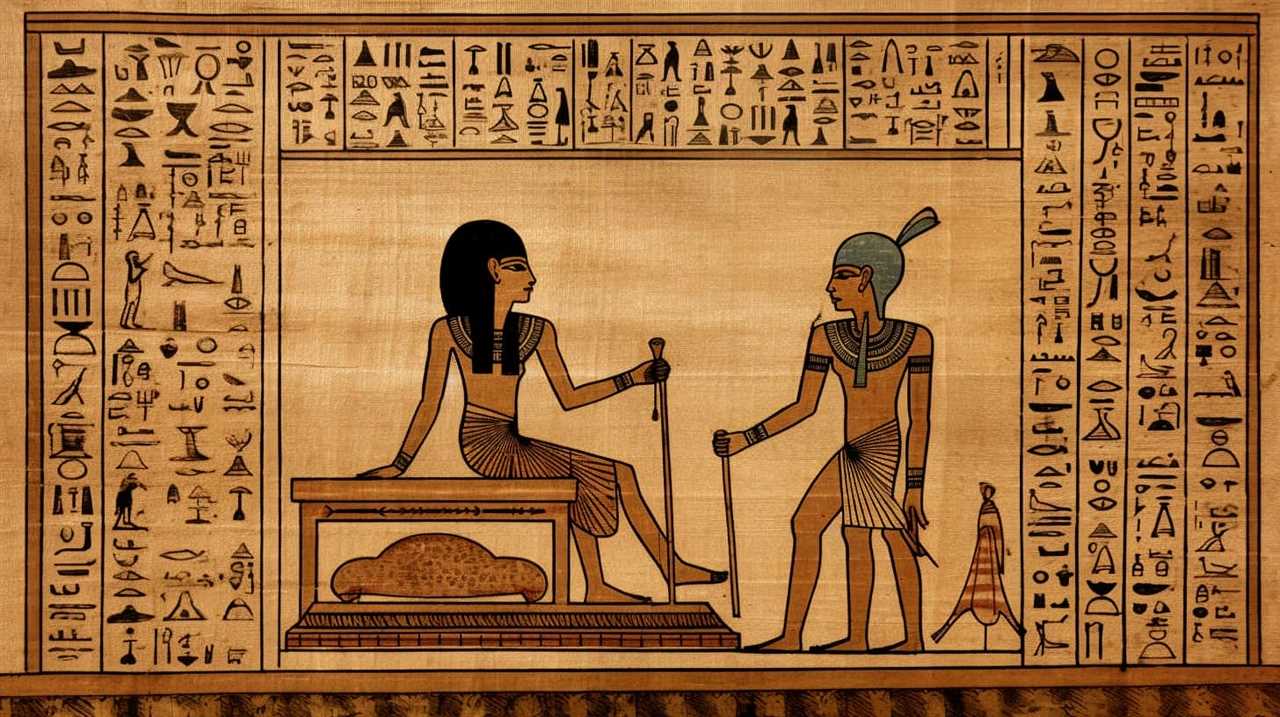In our pursuit of knowledge and mastery, we find motivation in the timeless wisdom of esteemed Roman leaders. Reflecting the saying, ‘Fortune favors the bold,’ the teachings of Julius Caesar, Seneca, Marcus Aurelius, Cato the Elder, Cicero, Augustus, and Livy have stood the test of time.
These esteemed individuals, through their philosophical insights, stoic teachings, rhetorical gems, lessons in leadership, and historical aphorisms, have left behind a legacy of wisdom that continues to inspire and guide us today.
By delving into their words, we gain a deeper understanding of the human condition, the art of governance, and the pursuit of virtuous living.
Join us as we explore the wisdom of these esteemed Roman statesmen and uncover the timeless lessons they have to offer.

Key Takeaways
- Julius Caesar’s wisdom and leadership skills were instrumental in the establishment of the Roman Empire, showcasing his innovative military tactics, strategic prowess, strong alliances, and charisma in navigating Roman politics.
- Seneca’s philosophical insights and stoic teachings have had a lasting impact on individuals seeking guidance and understanding, influencing literature, psychology, counseling, and personal development. His emphasis on self-discipline, resilience, and self-reflection provides practical advice for personal growth and well-being.
- Marcus Aurelius’ stoic teachings focus on accepting and embracing the present moment, cultivating inner peace, and applying stoic principles to navigate challenges and find meaning in life. His emphasis on self-reflection and self-improvement resonates with individuals seeking virtuous living.
- Cato the Elder, Augustus, and Livy also contribute to the timeless aphorisms from notable Roman statesmen. Cato the Elder’s wise sayings provide insights on leadership, virtue, and self-reliance. Augustus’ impact on Roman society through social reforms, infrastructure development, and political stability is noteworthy. Livy’s historical aphorisms find applications in governance and learning from history.
Julius Caesar’s Wisdom
Julius Caesar’s wisdom has stood the test of time due to his ability to navigate through complex political landscapes and seize opportunities for the betterment of Rome and its people. His military tactics were unparalleled, employing strategies that allowed him to conquer vast territories and establish the Roman Empire as a formidable force. Caesar understood the importance of adaptability on the battlefield, often employing innovative tactics that caught his enemies off guard. His ability to mobilize and command his troops effectively was a testament to his strategic prowess.
In addition to his military achievements, Julius Caesar’s political strategies were equally impressive. He recognized the importance of maintaining strong alliances and forging diplomatic relationships with key figures in the Roman Senate. Caesar’s charisma and persuasive oratory skills were instrumental in garnering support for his policies and initiatives. He was able to navigate the intricate web of Roman politics, often using his influence to sway decisions in his favor.
Transitioning into Seneca’s philosophical insights, it’s fascinating to compare Caesar’s pragmatic approach to the political landscape with Seneca’s emphasis on moral virtue and personal growth. While Caesar focused on seizing opportunities and achieving power, Seneca’s teachings centered around living a virtuous life and finding inner peace. These contrasting perspectives offer valuable insights into the complexities of leadership and the pursuit of wisdom.
Seneca’s Philosophical Insights
Seneca’s philosophical insights offer valuable teachings on stoicism. He emphasizes the importance of self-discipline and virtue in navigating life’s challenges. His wisdom has had a profound impact on countless individuals throughout history. It has inspired them to cultivate inner strength and resilience. Even in the modern world, Seneca’s teachings continue to hold relevance. We strive to find balance, peace, and meaning in our lives.

Seneca’s Stoic Teachings
In exploring the realm of Stoic philosophy, we uncover profound insights into life and the human condition. Seneca’s practical philosophy offers valuable guidance on how to navigate the challenges of everyday life. His teachings provide Stoic principles that can be applied to our daily experiences, enabling us to cultivate resilience, inner peace, and wisdom.
Seneca emphasized the importance of understanding that we can’t always control external events, but we can control how we respond to them. He encouraged individuals to cultivate self-discipline, practice moderation, and maintain a rational mindset in the face of adversity.
Impact of Seneca’s Wisdom
As we delve into the profound insights of Seneca’s wisdom, it becomes evident that his philosophical insights have had a lasting impact on individuals seeking guidance and understanding in navigating the complexities of life. Seneca’s teachings have influenced literature and continue to shape the way we approach various aspects of life. His emphasis on self-reflection and the pursuit of virtue resonates with readers across time and cultures. Seneca’s practical applications of stoicism offer practical advice on how to live a fulfilling and meaningful life. His teachings encourage individuals to focus on what is within their control, to cultivate inner strength, and to find contentment amidst the challenges of life. Seneca’s wisdom has stood the test of time and continues to inspire and guide those who seek enlightenment and personal growth.
| Influence on Literature | Practical Applications |
|---|---|
| Seneca’s works have greatly influenced philosophical and literary circles throughout history. His ideas have been referenced and quoted by countless writers and thinkers. | Seneca’s teachings provide practical guidance for individuals seeking to improve themselves and navigate life’s challenges. His emphasis on self-reflection, resilience, and the pursuit of virtue offers actionable advice for personal growth and well-being. |
| Seneca’s writings have been incorporated into various literary genres, including essays, plays, and letters. His ideas on the nature of happiness, the importance of self-discipline, and the acceptance of fate have become timeless themes in literature. | Seneca’s practical applications of stoicism equip individuals with tools to cultivate inner peace and resilience. His teachings encourage individuals to focus on what is within their control, to embrace adversity, and to find contentment in the present moment. |
| The influence of Seneca’s wisdom can be seen in the works of philosophers, such as Montaigne and Nietzsche, as well as in modern self-help literature. | Seneca’s practical applications extend beyond philosophy and literature. His teachings have found practical applications in psychology, counseling, and personal development, offering individuals strategies for navigating life’s challenges and finding fulfillment. |
Modern Relevance of Seneca
Throughout history, people have found timeless wisdom and guidance in the philosophical insights of Seneca. Seneca’s teachings on resilience and adversity continue to have a profound influence on personal growth in the modern world.

In today’s fast-paced and unpredictable society, Seneca’s emphasis on resilience becomes even more relevant. His writings remind us that adversity isn’t something to be feared, but rather an opportunity for personal growth and self-improvement. Seneca teaches us that by embracing challenges and developing resilience, we can navigate through life’s difficulties with grace and strength.
His insights encourage us to cultivate inner strength and to view setbacks as opportunities for learning and growth. Seneca’s timeless wisdom serves as a guiding light for those seeking mastery over their own lives, providing invaluable lessons on how to navigate the challenges of the modern world with resilience and fortitude.
Marcus Aurelius’ Stoic Teachings
We will explore Marcus Aurelius’ stoic teachings, delving into their timeless wisdom and practical applications.
- Stoic principles:
- Aurelius’ teachings were rooted in Stoic philosophy, which emphasized the importance of accepting and embracing the natural order of the universe.
- Stoicism taught individuals to focus on what they can control, such as their own thoughts and actions, rather than being consumed by external factors beyond their control.
- Aurelius believed that by practicing stoic principles, individuals could achieve inner tranquility and cultivate a virtuous character.
- Marcus Aurelius’ Meditations:
- Aurelius’ renowned work, ‘Meditations,’ serves as a personal journal filled with reflections on life, virtue, and the human condition.
- The meditations offer practical advice on how to navigate challenges and live a meaningful life.
- Aurelius encourages self-reflection, reminding readers to align their actions with their values and to constantly strive for self-improvement.
- Practical applications:
- Aurelius’ stoic teachings can be applied to various aspects of life, including relationships, work, and personal growth.
- By adopting stoic principles, individuals can cultivate resilience, maintain perspective during difficult times, and make decisions in alignment with their values.
- Aurelius’ teachings remind us of the power of mindfulness, self-discipline, and the importance of living a life of virtue.
Cato the Elder’s Wise Sayings
Cato the Elder’s wise sayings continue to resonate with us today due to their enduring wisdom. His thoughts on leadership, virtue, and the importance of self-reliance have had a profound impact on modern society.

As contemporary leaders, we can learn valuable lessons from Cato’s teachings and apply them to navigate the complexities of our own time.
Cato’s Enduring Wisdom
In our exploration of timeless aphorisms from notable Roman statesmen, the enduring wisdom of Cato the Elder comes to the forefront. Cato’s timeless advice and political principles continue to resonate with those seeking mastery in the realm of politics and governance.
Here are three subtopics that delve into the depth of Cato’s enduring wisdom:
- Steadfast Morality: Cato believed in the importance of upholding moral values and integrity in public life. He emphasized the need for politicians to act with honesty, virtue, and righteousness, serving as a beacon of ethical conduct.
- Frugality and Simplicity: Cato advocated for simplicity in both personal and political life. He believed in avoiding extravagance, excess, and unnecessary luxuries, and instead promoting frugality and a focus on essential needs.
- Resilient Republic: Cato’s political principles centered around the preservation and strengthening of the Roman Republic. He emphasized the importance of protecting the republic from corruption, external threats, and the erosion of democratic institutions.
Cato’s enduring wisdom offers valuable lessons for contemporary leaders, reminding us of the timeless principles that underpin successful governance.

Impact on Modern Society
The enduring wisdom of Cato the Elder continues to resonate in today’s society through his wise sayings, which have had a profound impact on our understanding of politics and governance.
Cato’s aphorisms have greatly influenced political discourse, providing valuable insights into the nature of power and the responsibilities of leaders. His emphasis on integrity, honesty, and the pursuit of the common good have become guiding principles in the realm of politics.
Moreover, Cato’s teachings have found application in personal development, serving as a moral compass for individuals striving to lead virtuous lives. His emphasis on self-discipline, frugality, and perseverance resonates with those seeking personal growth and success.
Cato’s enduring wisdom serves as a timeless reminder of the importance of ethical leadership and individual character in both the political and personal spheres.

Lessons for Contemporary Leaders
Applying Cato the Elder’s timeless wisdom to our leadership practices today, we can learn valuable lessons from his wise sayings. Cato the Elder, a renowned Roman statesman, provides us with leadership strategies that are still relevant in contemporary society. Here are three sub-lists of his timeless wisdom:
- Prioritize integrity: Cato believed that a leader’s character and moral values are crucial. Upholding integrity builds trust among team members and fosters a positive work environment.
- Embrace discipline: Cato emphasized the importance of discipline in leadership. Leaders should set high standards for themselves and their teams, ensuring that everyone remains focused and committed to achieving goals.
- Emphasize continuous learning: Cato encouraged leaders to seek knowledge and wisdom constantly. Keeping an open mind and being receptive to new ideas allows leaders to adapt to changing circumstances and make informed decisions.
Cicero’s Rhetorical Gems
We have uncovered Cicero’s rhetorical gems that continue to captivate and inspire with their timeless wisdom. Cicero’s oratory techniques were revolutionary during his time, and they continue to shape political discourse even today. His influence on political discourse can be seen in his emphasis on clarity, conciseness, and precision in communication.
One of Cicero’s most notable contributions to oratory is his use of rhetorical devices. He believed that effective communication required the use of strategies such as repetition, parallelism, and rhetorical questions. These techniques helped him capture the attention of his audience and convey his message with impact.
Furthermore, Cicero’s mastery of language and eloquence allowed him to sway public opinion and shape political debates. He believed that language had the power to inspire and persuade, and he used this power to great effect in his speeches. His ability to craft compelling arguments and deliver them with conviction made him a formidable force in Roman politics.

Cicero’s influence on political discourse extends beyond his own time. His ideas on rhetoric and effective communication continue to be studied and applied by politicians and leaders today. His emphasis on clarity, logic, and emotional appeal serves as a timeless guide for those seeking to master the art of persuasion.
Augustus’ Lessons in Leadership
Continuing from Cicero’s rhetorical gems, let’s now delve into the invaluable lessons in leadership imparted by Augustus, one of the most notable Roman statesmen.
Augustus’ leadership principles:
- Adaptive Governance: Augustus understood the importance of adapting his governance style to the evolving needs of the Roman society. He implemented reforms and policies that promoted stability, prosperity, and the long-term well-being of the empire.
- Strategic Vision: Augustus possessed a clear vision for the future of Rome. He focused on expanding and consolidating the empire’s territories, strengthening its military, and establishing a system of governance that would ensure its longevity.
- Effective Communication: Augustus was a master of effective communication. He recognized the power of public speeches and propaganda in shaping public opinion. By carefully crafting his messages and using various mediums, he was able to maintain the support of the people and rally them behind his leadership.
Augustus’ impact on Roman society:

- Social Reforms: Augustus implemented various social reforms aimed at restoring traditional Roman values and promoting family life. These included measures to encourage marriage and childbirth, as well as laws that regulated moral conduct and public behavior.
- Infrastructure Development: Augustus invested heavily in infrastructure development, including the construction of roads, aqueducts, and public buildings. This not only improved the quality of life for Roman citizens but also stimulated economic growth and facilitated trade within the empire.
- Political Stability: Augustus’ leadership brought about a period of political stability and peace known as the Pax Romana. This allowed for the flourishing of the arts, sciences, and literature and laid the foundation for the Roman Empire’s long-lasting influence on Western civilization.
Livy’s Historical Aphorisms
Livy’s Historical Aphorisms provide valuable insights into the Roman statesman’s perspective on history and its lessons. As a historian and scholar, Livy’s wisdom can be applied to governance and provide guidance for future leaders. His aphorisms can be seen as timeless principles that can be utilized in various contexts, including politics, administration, and decision-making.
One way to understand the relevance of Livy’s historical aphorisms is by examining their applications in governance. For example, Livy emphasized the importance of unity and harmony among the people, stating that ‘In unity, strength is found.’ This wisdom can be applied in governance by fostering inclusivity and promoting collaboration among different factions, leading to a stronger and more stable society.
Another lesson from Livy’s aphorisms is the importance of learning from history. He famously said, ‘The study of history is the best medicine for a sick mind.’ This insight highlights the significance of studying past events and understanding their causes and consequences. Historians and scholars can draw inspiration from Livy’s emphasis on the study of history, using it as a tool to gain insights, avoid repeating past mistakes, and make informed decisions.
Frequently Asked Questions
What Were Some of Julius Caesar’s Military Strategies and Tactics?
Julius Caesar’s military strategies and tactics included expert use of siege warfare and the famous "divide and conquer" approach. These methods allowed him to effectively overcome enemy fortifications and manipulate alliances to his advantage.

How Did Seneca’s Philosophical Insights Influence His Personal Life and Relationships?
Seneca’s philosophical insights deeply impacted personal growth and moral character. His teachings guided individuals towards self-reflection, virtue, and a focus on the present moment. His influence extended beyond intellectual pursuits, shaping relationships and fostering a sense of inner peace.
What Are Some Key Principles of Stoicism as Taught by Marcus Aurelius?
Some key principles of Stoicism, as taught by Marcus Aurelius, include the acceptance of things beyond our control, the focus on the present moment, and the pursuit of virtue in all aspects of life.
Can You Provide Examples of How Cato the Elder’s Wise Sayings Were Applied in Real-Life Situations?
Cato the Elder’s wise sayings prove their practicality through real-life application. His belief in learning from others, even fools, and the importance of understanding a subject before expressing it in words resonates with us today.
How Did Cicero’s Rhetorical Gems Contribute to His Success as a Lawyer and Politician?
Cicero’s exceptional oratory skills played a crucial role in his success as both a lawyer and politician. His persuasive speeches captivated audiences and helped shape public opinion, ultimately contributing to his numerous political achievements.

Are the Aphorisms and Quotes from Ancient Roman Statesmen Similar?
When comparing the aphorisms and quotes from ancient Roman statesmen, it is evident that the wisdom and insights they shared are timeless. The profound words of these ancient Roman leaders continue to resonate with people today, showcasing the enduring relevance of their timeless quotes ancient roman statesmen.
Conclusion
In conclusion, the timeless aphorisms from notable Roman statesmen provide valuable insights into various aspects of life. From Julius Caesar’s wisdom and Seneca’s philosophical insights to Marcus Aurelius’ stoic teachings, these ancient words continue to resonate with us today.
Cato the Elder’s wise sayings and Cicero’s rhetorical gems offer timeless advice, while Augustus’ lessons in leadership and Livy’s historical aphorisms remind us of the importance of learning from the past.
These words of wisdom serve as a reminder that even in the fast-paced modern world, the wisdom of the ancients can still guide us.
Fritz is a writer whose humor and wit infuse life into words. His creativity, combined with a profound love for the English language, makes him a unique voice at afterQuotes. Fritz’s engagement with books, culture, and social media adds depth to his contributions, making them resonate with our diverse audience.










